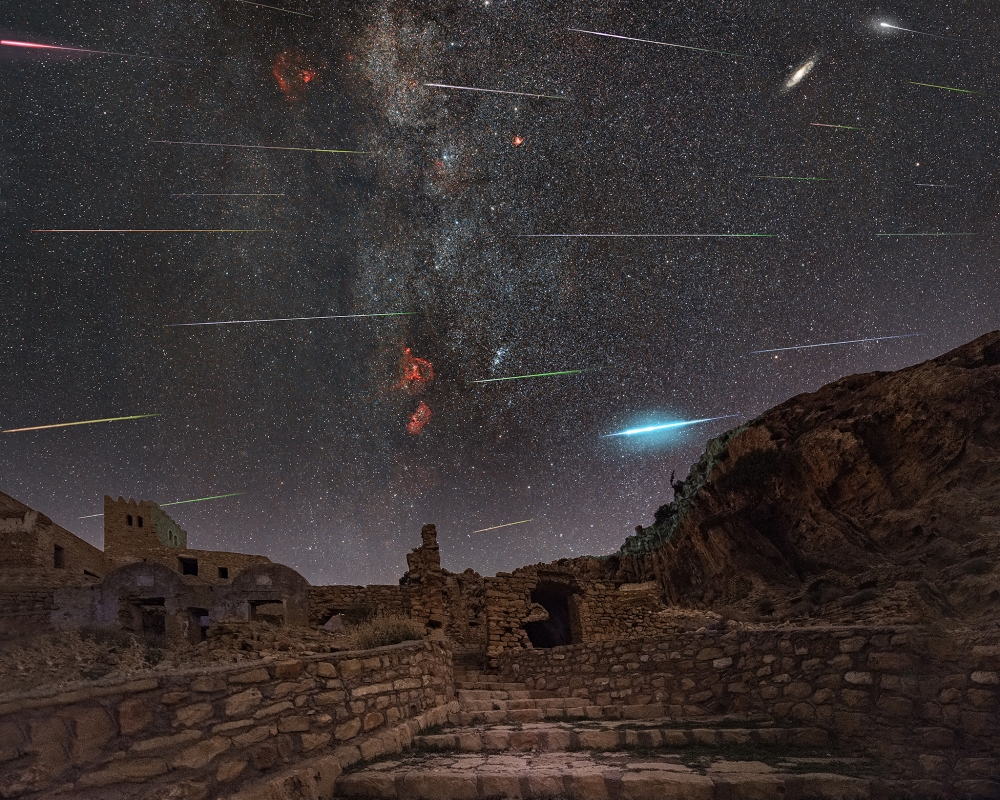Description
Deux nuits pour une seule photo, 1h30h d’exposition pour le ciel et 50h de données pour les étoiles filantes en utilisant 4 caméras et 3 filtres astronomiques pour combattre la pollution lumineuse.
Au temps des Grecs et des romains, les gens croyaient qu’à chaque personne correspondait une étoile. Quand la personne mourait, elle tombait du ciel et devenait une étoile filante.
C’est unique d’être là, seul dans le silence au milieu de nulle part et en plénitude face à cette nature
NASA : Youtube
Nasa : Facebook
Nasa : 𝗟𝗲𝘀 𝗗𝗲𝗹𝘁𝗮 𝗮𝗾𝘂𝗮𝗿𝗶𝗱𝗲𝘀 𝗦𝘂𝗱
Text from NASA :
A Meteor Wind over Tunisia
Image Credit & Copyright: Makrem LarnaoutExplanation: Does the Earth ever pass through a wind of meteors? Yes, and they are frequently visible as
meteor showers. Almost all meteors are sand-sized debris that escaped from a Sun-orbiting comet or asteroid, debris that continues in an elongated
orbit around the Sun. Circling the
same Sun, our Earth can move through an
orbiting debris stream, where it can appear, over time, as a
meteor wind. The meteors that light up in
Earth’s atmosphere, however, are usually destroyed. Their streaks, though, can all be traced back to a single point on the sky called
the radiant. The
featured image composite was taken over two days in late July near the ancient
Berber village
Zriba El Alia in
Tunisia, during the peak of the
Southern Delta Aquariids meteor shower. The radiant is to the right of the image.
A few days ago our Earth experienced the peak of a
more famous meteor wind —
the Perseids.









Reviews
There are no reviews yet.